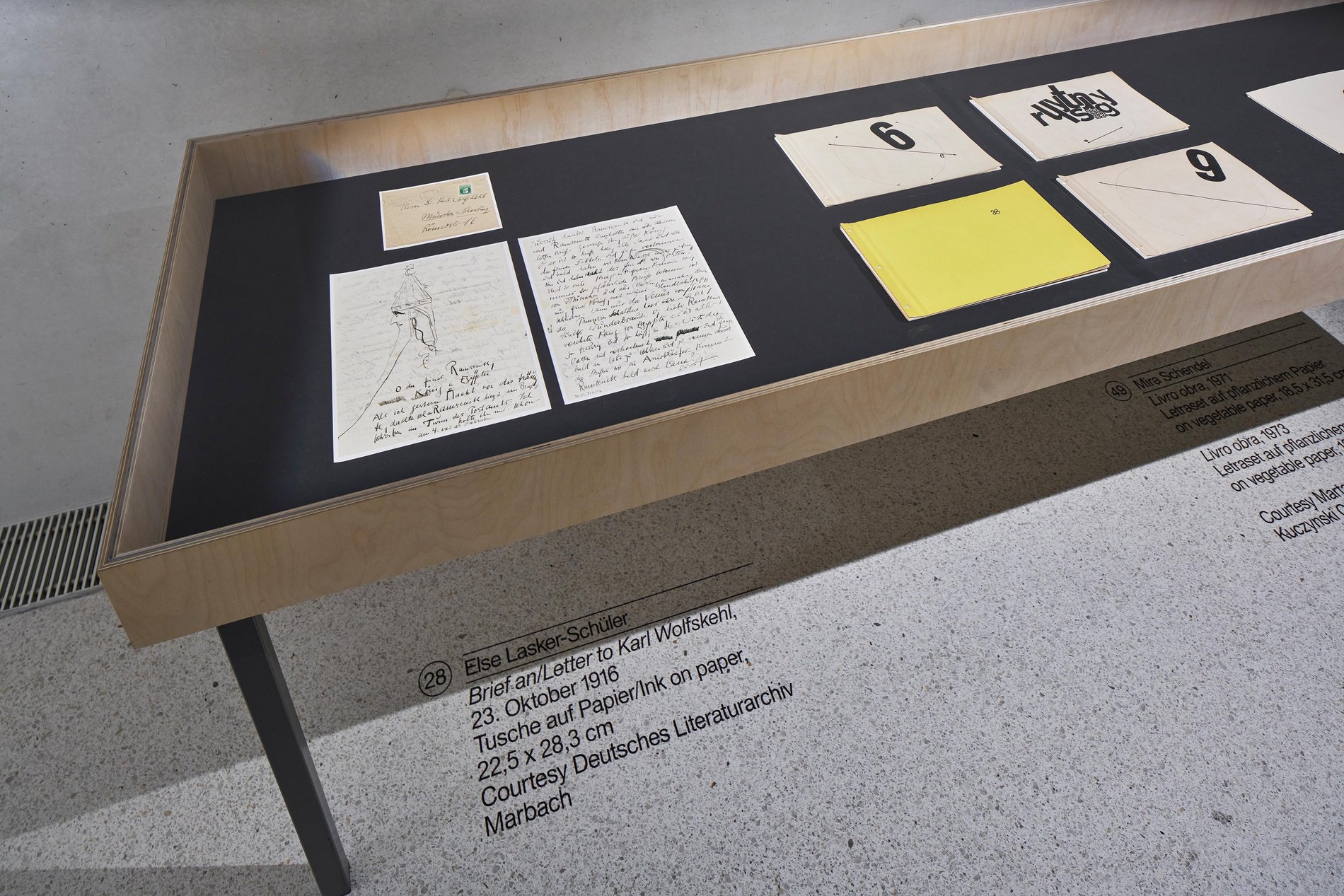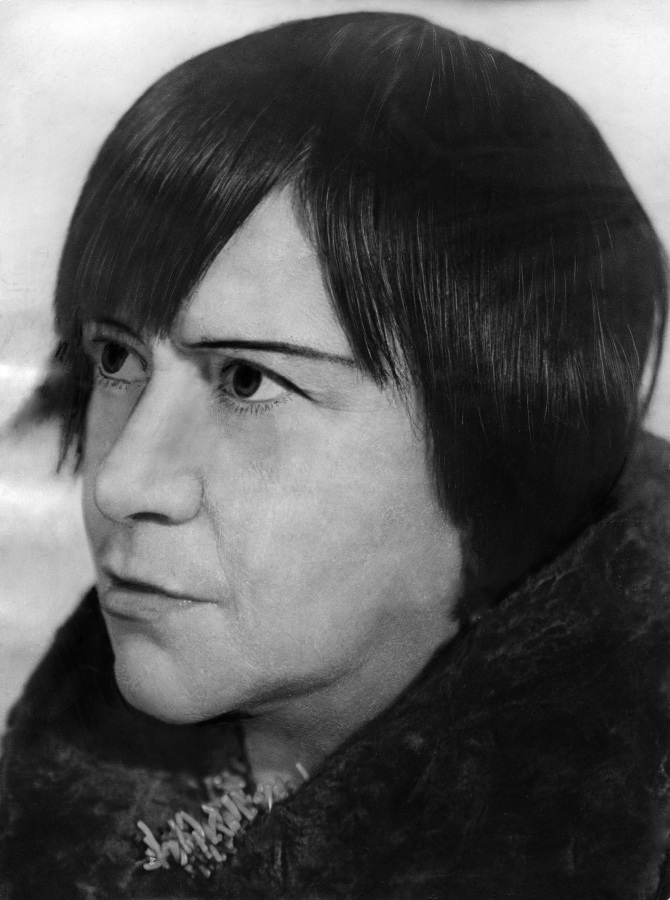Letter to Karl Wolfskehl, 23 October 1916
Ink on paper, 22.5 x 28.3 cm
Else Lasker-Schüler is considered one of the most renowned German Expressionists. Her literary work includes poems, prose, and plays. In her lifetime, her lyric poetry was published in various avant-garde magazines like Der Sturm, whose editor, Herwarth Walden, was Lasker-Schüler’s second husband; in Karl Kraus’ Fackel, and in anthologies like Mein blaues Klavier (1943). Her writings are strongly autobiographical and display great poetic force. Love poetry as well as religious topics play an important role. She frequently used biblical and broadly oriental motifs that she combined freely, coining new linguistic creations in the process.
The exhibition includes an illustrated letter that exemplifies her artistic exchange with the author Karl Wolfskehl. Furthermore, she was closely associated with the painter Franz Marc through their letters. In a correspondence between “Prince Jussuf of Thebes,” Lasker-Schüler’s alter ego, and Marc, who responded as the “Blaue Reiter,” a poetic fantasy world blossomed. On sheets illustrated with pencil and crayon, some of them collaged with gold paper, emerged images of a place of longing which Lasker-Schüler also associated with Jerusalem. In the merging and juxtaposition of imagery and writing, Lasker-Schüler created a delicately drawn picture of her inner experience.



